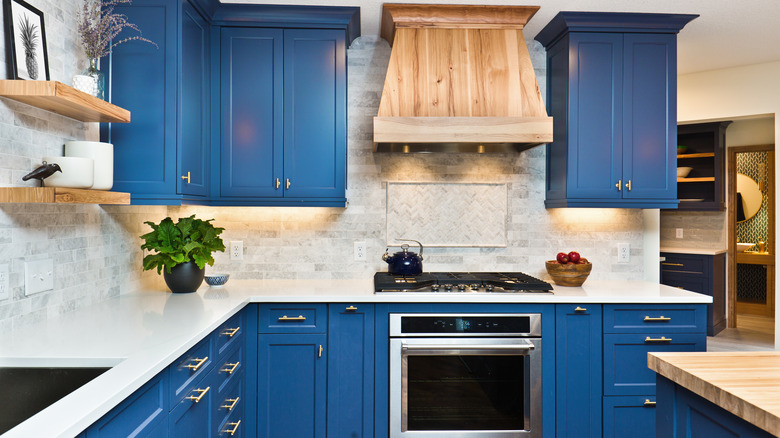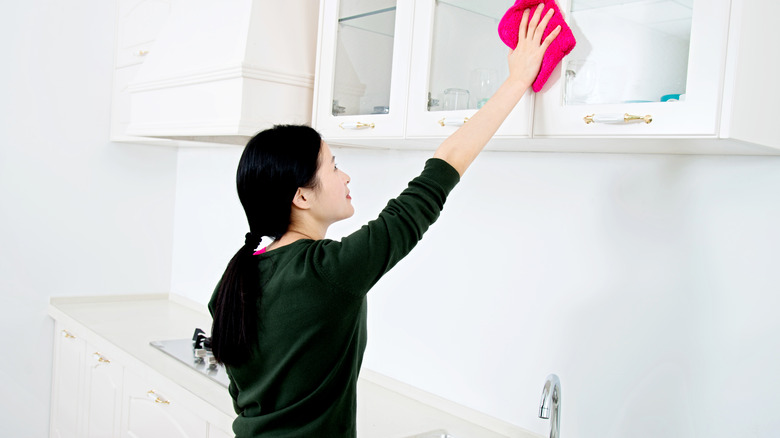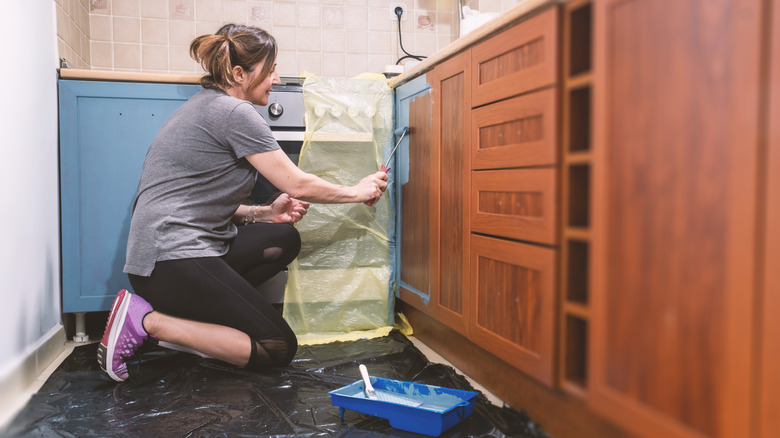Here's How To Achieve A Good Paint Job On Cabinets Without Sanding
Painting your own cabinets can save you a ton of money. It can also feel like a very intimidating prospect once you start envisioning the extensive sanding and associated cleanup that is typically involved in such a venture. Fortunately for those who aren't crazy about the idea of days full of dusty and dirty prep work, times have changed and there is a way to achieve a stunning paint job on your cabinets without sanding. Yes, deglosser — also known as liquid sandpaper — has entered the chat.
Deglosser is a liquid chemical solution that slightly dissolves the glossy surface of paint or polyurethane, leaving behind a dull, tacky finish that is perfect for adhering to new paint. This means that instead of sanding away your cabinet's current glossy finish, deglosser can do the hard work for you. If you have plans to paint your cabinets in the future, consider reaching for this shortcut and cashing in on the benefits of using liquid sandpaper.
Preparing your cabinets with deglosser
Even if you decide to swap out sanding for using a deglosser, painting your cabinets will require a significant amount of prep work in order to avoid common mistakes. First, thoroughly clean your cabinets to remove any grease or debris that could potentially prevent the deglosser from evenly adhering. Then, it's time to apply your deglosser. While dust won't be an issue during deglossing, the process will still require good ventilation due to the chemicals' strong fumes.
Some deglossers instruct users to paint within one hour of deglossing for best results. If this is the case with the product you've purchased, you may wish to degloss and paint your cabinets in batches to ensure that they are all painted within the suggested time frame. Some products may also suggest wiping away excess deglosser before painting. Once the deglosser has been evenly applied, allowed to dry, and wiped (if required), you are free to prime and paint your cabinets the same way you would if you had sanded them. Just note that a deglosser will not remove bumps or imperfections the way that sandpaper would; it will only remove the glossy surface in order to allow new paint to stick.
Painting your cabinets after using deglosser
While the process of priming and painting after using a deglosser is largely the same as it would be after sanding, you might notice some differences. Since the deglosser has turned your cabinets' prior glossy finish into a tacky surface for painting, you'll likely note that your brush or roller appears to drag against the surface of the cabinets. This is normal and not a cause for concern.
If you are painting stained wood cabinets, it is best to apply a stain-blocking primer after deglossing and before painting. This will prevent the stain that was applied to the wood and sealed in with polyurethane from bleeding into your new paint once the deglosser has disrupted the sealant layer. Follow your stain-blocking primer with the high-quality paint of your choice and then take a moment to admire all the time, hard work, and money you've saved yourself by painting your own cabinets without sanding.


